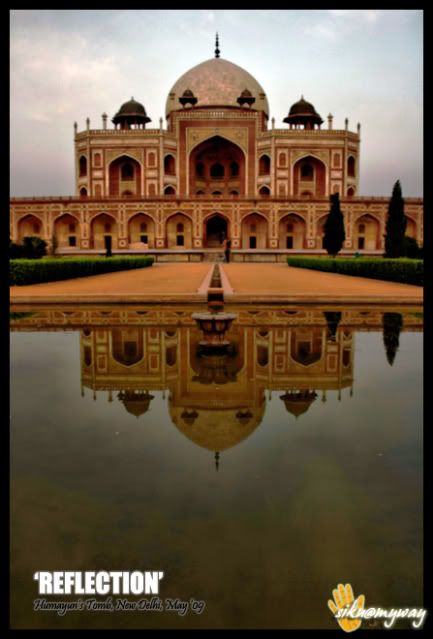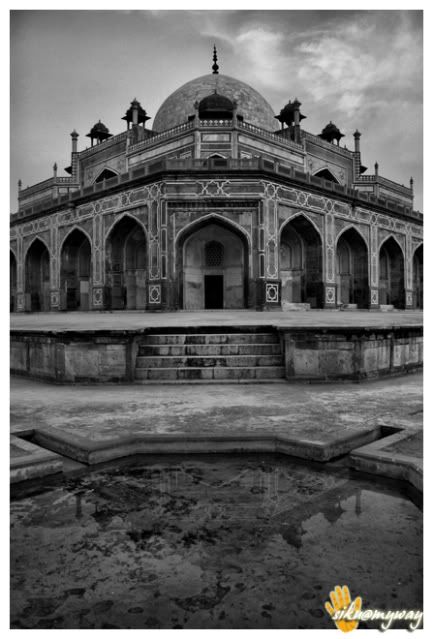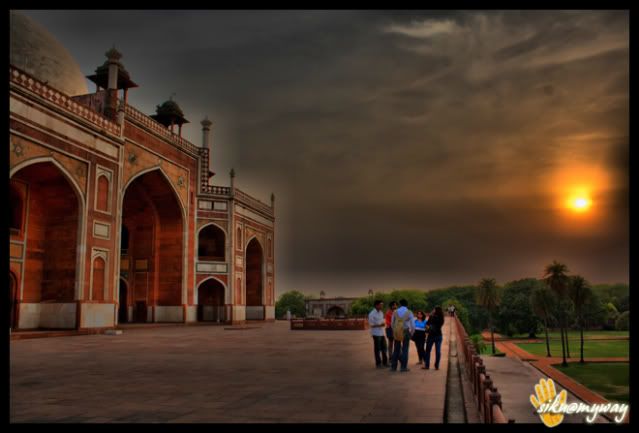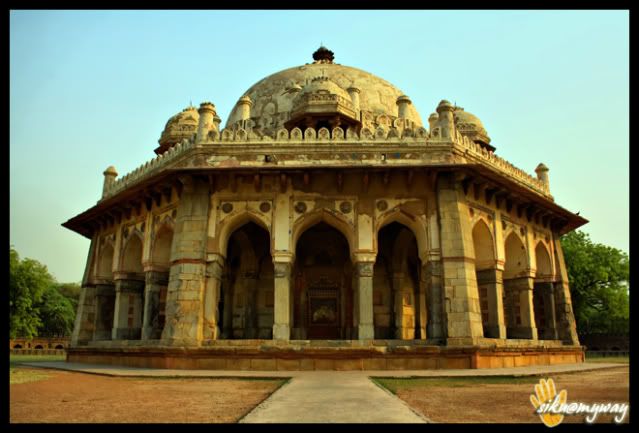
Humayun's tomb (Hindi: हुमायूँ का मक़बरा, Urdu: ہمایون کا مقبره Humayun ka Maqbara) is a complex of buildings built as the Mughal Emperor Humayun's tomb, commissioned by Humayun's wife Hamida Begum in 1562 CE, and designed by Mirak Mirza Ghiyath, a Persian architect.[1] It was the first garden-tomb on the Indian subcontinent, and is located in Nizamuddin East, Delhi, India, close to the Dina-panah citadel also known as Purana Qila, that Humayun founded in 1533.[2][3]
The complex encompasses the main tomb of the Emperor Humayun, which houses the graves of his wife, Hamida Begum, and also Dara Shikoh, son of the later Emperor Shah Jahan, as well as numerous other subsequent Mughals, including Emperor Jahandar Shah, Farrukhsiyar, Rafi Ul-Darjat, Rafi Ud-Daulat and Alamgir II.[4] The complex is a UNESCO World Heritage Site.[5] It represented a leap in Mughal architecture, and together with its accomplished Charbagh garden, typical of Persian gardens, but never seen before in India, it set a precedent for subsequent Mughal architecture. It is seen as a clear departure from the fairly modest mausoleum of his father, the first Mughal Emperor, Babur, called Bagh-e Babur (Gardens of Babur) in Kabul (Afghanistan). Though the latter was the first Emperor to start the tradition of being buried in a paradise garden.[6][7] Modelled on Gur-e Amir, the tomb of his ancestor and Asia's conqueror Timur in Samarkand, it created a precedent for future Mughal architecture of royal mausolea, which reached its zenith with the Taj Mahal, at Agra. [8][9][10]
The site was chosen on the banks of Yamuna river, due to its proximity to Nizamuddin Dargah, the mausoleum of the celebrated Sufi saint of Delhi, Nizamuddin Auliya, who was much revered by the rulers of Delhi, and whose residence, Chilla Nizamuddin Auliya lies just north-east of the tomb. In later Mughal history, the last Mughal Emperor, Bahadur Shah Zafar took refuge here, during the Indian Rebellion of 1857, along with with three princes, and was captured by Captain Hodson before being exiled to Rangoon.[1][11] At the time of the Slave Dynasty this land was under the 'KiloKheri Fort' which was capital of Sultan Kequbad, son of Nasiruddin (1268-1287).
SOURCE: Wikipedia, the free encyclopedia
Don’t know how I skipped this beautiful piece of architecture during this two years stay in
I'll love to show this beautiful piece of architecture thru my lens....










No comments:
Post a Comment